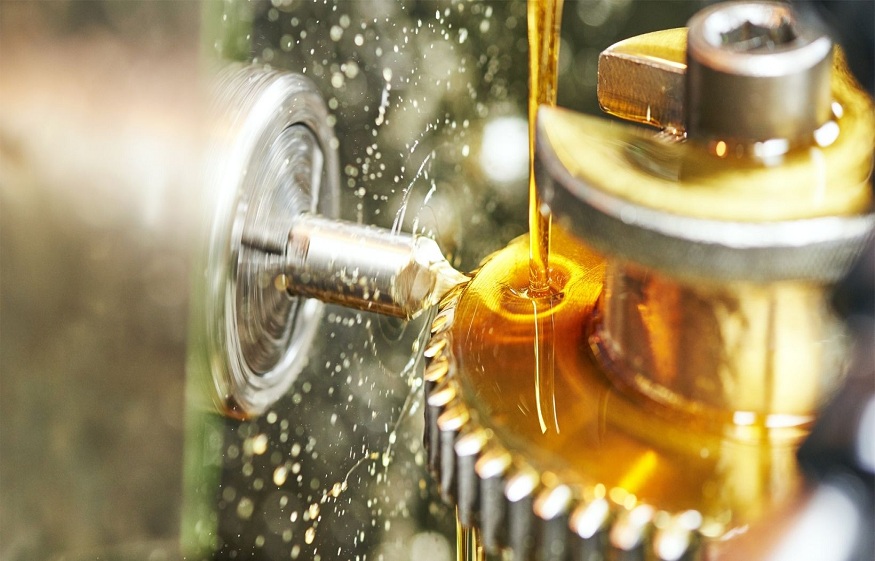Proper lubrication is critical to the efficient and long-term operation of industrial machinery. Lube oil pumps play a pivotal role in ensuring that moving parts receive the right amount of lubrication, reducing friction, minimizing wear, and extending equipment life. Choosing the right lube oil pump is not just about matching specifications; it requires understanding your machinery’s operational needs, fluid characteristics, and the capabilities of various oil pump manufacturers.
This guide provides an in-depth look at how to select the ideal lube oil pump for your industrial equipment while maximizing efficiency, reliability, and performance.
Understanding Lube Oil Pumps
Lube oil pumps are specialized devices designed to circulate lubricating oil throughout machinery. Unlike standard pumps that move fluids without strict regulation, lube oil pumps must maintain precise flow and pressure to ensure that bearings, gears, and other critical components are adequately lubricated.
A well-designed lube oil pump ensures:
- Consistent oil flow: Maintaining an even film of lubricant on surfaces.
- Proper pressure regulation: Preventing both over- and under-lubrication.
- Operational reliability: Reducing the risk of equipment failure due to friction or overheating.
Oil pump manufacturers design these pumps to handle specific viscosities, temperatures, and operational loads, making it essential to choose a pump suited to your machinery’s requirements.
Key Factors to Consider When Choosing Lube Oil Pumps
1. Determine the Flow Rate and Pressure Requirements
The first step in selecting a lube oil pump is understanding the flow and pressure demands of your machinery. Insufficient flow can result in inadequate lubrication, while excessive flow can lead to oil wastage and potential system leaks.
- Flow rate: Consider the volume of oil required per minute for your machine’s moving components.
- Pressure requirements: Ensure the pump can maintain optimal pressure even under varying load conditions.
Matching the pump’s flow and pressure capabilities to your machinery ensures consistent lubrication and minimizes the risk of component damage.
2. Evaluate Oil Viscosity and Temperature
Lube oil pumps must handle the specific type of lubricant used in your system. Oil viscosity and operating temperature influence pump selection significantly.
- High-viscosity oils: Require pumps capable of maintaining flow without excessive strain or wear.
- Temperature extremes: Pumps must withstand high or low operating temperatures while maintaining efficiency.
Choosing a pump compatible with your lubricant properties prevents cavitation, reduced flow, and premature wear.
3. Consider Pump Type
Several types of lube oil pumps are suitable for different applications, each offering distinct advantages:
- Gear pumps: Known for consistent flow and high reliability, ideal for high-pressure lubrication systems.
- Centrifugal pumps: Suitable for low-viscosity oils and applications requiring moderate pressure.
- Vane pumps: Offer smooth, low-pulsation flow, suitable for sensitive machinery requiring stable lubrication.
Understanding the strengths of each pump type helps you match the pump to your operational and maintenance needs.
4. Reliability and Build Quality
A lube oil pump operates continuously under demanding conditions. Build quality, materials, and design reliability directly impact the pump’s performance and lifespan.
- Durable materials: Ensure components are resistant to wear, corrosion, and thermal stress.
- Precision engineering: Prevents leaks and ensures consistent flow over extended periods.
- Sealing systems: High-quality seals reduce the risk of oil contamination and leakage.
Investing in a high-quality pump minimizes downtime and lowers long-term maintenance costs.
5. Maintenance and Serviceability
Maintenance is crucial for lube oil pumps to operate efficiently. When choosing a pump, consider its ease of servicing:
- Accessibility of internal components for inspection and replacement
- Availability of spare parts from oil pump manufacturers
- Simplicity of cleaning and lubrication routines
A pump that is easy to maintain reduces downtime and ensures your machinery remains reliably lubricated.
6. Compatibility with Machinery
Lube oil pumps must integrate seamlessly with your existing hydraulic or lubrication systems. Incompatibility can cause pressure drops, flow inconsistencies, or mechanical strain.
- Check inlet and outlet sizes and connections.
- Ensure compatibility with existing oil reservoirs and piping systems.
- Confirm the pump can handle your machinery’s operational range and duty cycles.
Proper integration ensures optimal performance and extends the life of both the pump and your machinery.
7. Evaluate Performance Under Varying Conditions
Industrial machinery often operates under fluctuating loads, speeds, and temperatures. Your lube oil pump should maintain consistent performance across these varying conditions.
- High-quality pumps can adjust flow and pressure to match load requirements.
- Reliable pumps reduce the risk of under-lubrication during peak loads.
Oil pump manufacturers often provide detailed performance charts and testing data to help assess pump behavior under different operating scenarios.
8. Supplier Reputation and Support
Choosing a reputable oil pump manufacturer ensures product reliability, technical support, and availability of spare parts. Consider:
- Manufacturer experience in producing lube oil pumps for your industry
- Customer support and troubleshooting assistance
- Warranty coverage and post-purchase service
Reliable suppliers reduce the risk of operational interruptions and ensure long-term system performance.
Practical Tips for Selecting the Right Lube Oil Pump
- Analyze machinery requirements: Document flow rate, pressure, viscosity, and operating temperature before selecting a pump.
- Compare pump types: Evaluate gear, vane, and centrifugal pumps for compatibility with your lubrication needs.
- Check manufacturer specifications: Review performance charts and maintenance recommendations.
- Assess long-term costs: Factor in energy efficiency, maintenance frequency, and spare parts availability.
- Consider future scalability: Select a pump capable of handling potential upgrades or increased production demands.
Common Applications of Lube Oil Pumps
- Industrial machinery: Ensures smooth operation of bearings, gears, and moving components.
- Power generation equipment: Maintains lubrication in turbines, compressors, and engines.
- Hydraulic systems: Supplies pressurized oil for smooth actuator operation.
- Marine and automotive systems: Provides reliable lubrication for engines and gear systems.
Properly selected and maintained lube oil pumps improve operational efficiency, prevent equipment failures, and reduce maintenance costs across all these applications.
Selecting the right lube oil pump is a critical decision for maintaining machinery efficiency and reliability. By considering flow rate, pressure, oil properties, pump type, reliability, and maintenance requirements, operators can choose a pump that delivers consistent lubrication and long-term performance.
Partnering with reputable oil pump manufacturers ensures access to high-quality components, technical support, and reliable service, all of which contribute to the longevity of both the pump and the machinery it serves.
Investing in the right lube oil pump is not just about keeping machinery running—it’s about optimizing efficiency, reducing maintenance costs, and safeguarding your industrial operations against costly downtime.

 Create a Personalized Fitness Program with Tennessee Men’s Clinic
Create a Personalized Fitness Program with Tennessee Men’s Clinic  How to Choose the Right Lube Oil Pump for Your Machinery
How to Choose the Right Lube Oil Pump for Your Machinery  Zyon Grand and Promenade Peak: A New Way to Live in Luxury
Zyon Grand and Promenade Peak: A New Way to Live in Luxury  From Manual to Fully Automated: What a Go High Level Expert Can Do in Just One Week
From Manual to Fully Automated: What a Go High Level Expert Can Do in Just One Week  Skye at Holland: A Peaceful Getaway Close to Penrith
Skye at Holland: A Peaceful Getaway Close to Penrith  Portable Household Generators: The Eco-Friendly Power Solution for Your Home Garden
Portable Household Generators: The Eco-Friendly Power Solution for Your Home Garden  Should You Choose a Gold Loan Over a Personal Loan for Emergencies?
Should You Choose a Gold Loan Over a Personal Loan for Emergencies?  The Role of Fluoroscopy and Neuronavigation in MISS
The Role of Fluoroscopy and Neuronavigation in MISS  Ayurvedic Hair Oil: Nourish and Restore Your Hair’s Naturally
Ayurvedic Hair Oil: Nourish and Restore Your Hair’s Naturally 